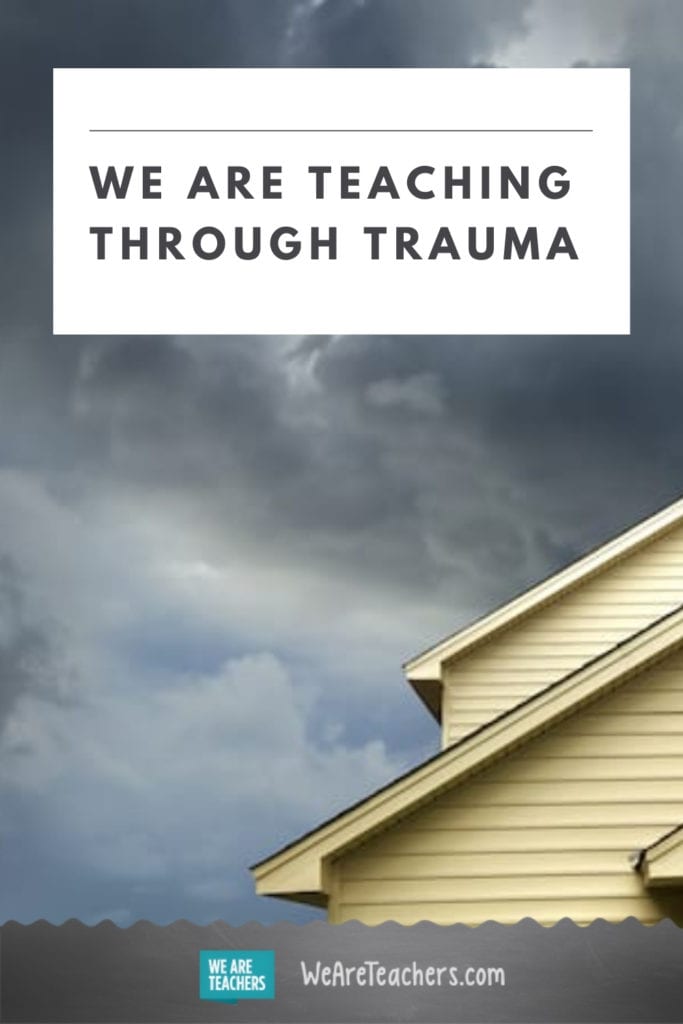As I write this, many schools are closed in Texas . And the closures aren’t pandemic related. They’re closed because of a storm that led to a massive utilities failure. One Texas teacher shared on the WeAreTeacher’s Facebook page that her school’s pipes froze and then burst. Another teacher posted that her school’s library caught on fire. Yet another said she is trying to teach students online through rolling blackouts. We are two months into the year, and the winter storm in Texas is just the latest challenge facing America’s teachers. In 2021, it seems every day means confronting new problems and their impacts on our kids.
Tomorrow is not simply another day at school
On January 6th, protesters stormed the United States Capital for the first time since August 24th, 1814. We saw the news coverage and tried to process what was happening in disbelief. We couldn’t help but wonder how to talk to our students about the attack because there was no lesson plan for that, just like there was no plan for how to continue schooling during an unprecedented global pandemic. Kylene Beers wrote a blog post that reminded us “that tomorrow is not simply another day at school.” We agreed and couldn’t help but wonder: when was the last normal day of school? And when will there be one again?
Teachers are teaching through trauma
There are a lot of resources out there about how teachers can best support students who have experienced trauma, but there aren’t many for how teachers can navigate teaching through trauma. There isn’t a person in this country that hasn’t experienced trauma this year. There’s been constant disaster—from climate change and social injustice to the pandemic. And no one is immune to the effects. Some of us freeze; others fight, flee, or fawn. That’s our brain’s way of trying to protect ourselves from danger or disaster.
[contextly_auto_sidebar]
There’s an elephant in our classrooms
I’ve never met a teacher who isn’t optimistic or at least tries to be. We are masters at leaving our problems at the classroom door and putting on a happy face so we can “show up for our kids.” But I can’t help but wonder if we’re doing a disservice to ourselves and our students. How can we not talk about what is happening with our students? I understand the fear. Some of us feel that it is not appropriate for us to discuss what’s happening. Isn’t that their families’ job? Others don’t feel it’s developmentally appropriate to talk about what’s happening. But whether we talk about the elephant or not, it is there.
It is Americans protesting after George Floyds’ death. It is an angry and violent mob storming the Capitol. It is a virus that has killed 500,000 Americans and counting. No student is immune. And no teacher is either. While we can’t control what is happening—or even see it coming—we can support our students to express their feelings. And that doesn’t mean we have to take sides or bring our politics and personal beliefs into our classrooms (unless we choose to).
How to talk to students about what’s happening
So how do we know what to say and how to talk to our students when we are still experiencing trauma? Sure there are a lot of expert opinions on this, but we wanted to hear straight from teachers. Here’s what they’re doing.
Use terms that kids can understand
“As a teacher, if I can’t make my students feel safe, then no learning is happening. So we need to discuss this in terms that kids can understand, in a way that helps them to see that we are here to support them and that we are here to make them feel safe. We don’t need to get into the ins and outs of who’s right and who’s wrong. We just need them to know that we have their backs and that this room is a sanctuary for learning.” —Kareem
Talk about what we do with big feelings
“We talked about ‘big feelings’ and what we do with them. The kids made great suggestions! Tell someone, write it down, breathe the feelings in and then let them go, exercise, draw a pic, etc. What I don’t want them to do is bottle up those feelings and shove them down.” —Karen
Be a safe space
“My high schoolers brought it up, and we talked about it openly and honestly with raw emotions and feelings and opinions, and it was one of the best conversations I’ve had with my kids. I did my best to remain unbiased and let them come to their own conclusions and decisions and opinions.” —Tamara
All aspects of life belong in school
And if you’re looking for an expert opinion, The Washington Post interviewed Elizabeth Dutro, an expert on trauma and learning and a fellow at the National Education Policy Center at the University of Colorado at Boulder. Here’s what she had to say, “When teachers allow children and youth to witness their struggles, humanity and vulnerabilities, students are positioned as active participants in a reciprocal process of being present as witnesses for one another. In addition, teachers’ sharing helps to demonstrate to students that all aspects of life belong in school, that they are seen, heard and valued in the classroom, and that their experiences matter as a source of knowledge.”
Show students, I see you, I hear you, I value you
Our students are watching us closely right now. They are looking to us for guidance on how to make sense of everything that is happening both in and out of school. When we create space for them to share their experiences, feelings, reactions, and worries, we are showing them that we see them, we hear them, and we value them. And while we don’t have all the answers, we can show them that we will be there to weather the storm.
Looking for more? Check out Black Lives Matter At School Resources, 9 Resources on Trauma Informed Schools, and Create a Toolbox for Care. For support with teaching through trauma, look into Resilient Educator.
Do you have other resources that support teachers who are teaching through trauma? Share in the comments below.
Plus, check out 27+ Free Counseling Options For Teachers.
Want more articles like this? Be sure to subscribe to our newsletter so you can get our latest picks.

